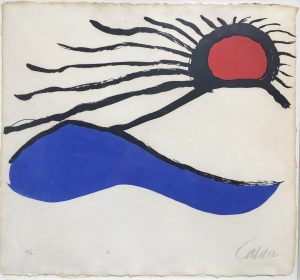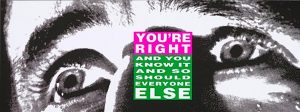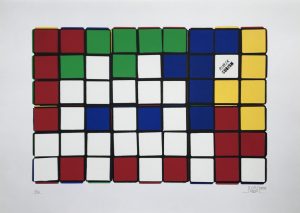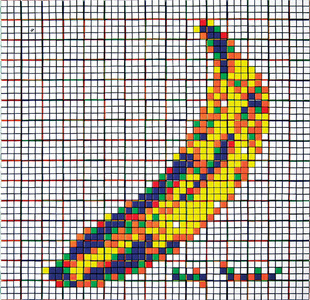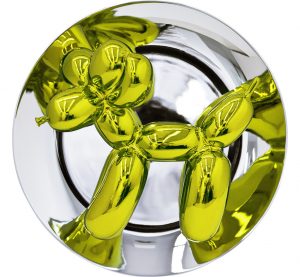
Victor Vasarely
Tri-Vega
1975
Silkscreen on Arches Paper
33 1/4 x 30 1/8 in.
Pencil signed and numbered
“Movement does not rely on composition nor a specific subject, but on the apprehension of the act of looking, which by itself is considered as the only creator.”
—From Victor Vasarely’s Yellow Manifesto
We don’t always see what we think we see.
Saying that Victor Vasarely was ahead of his time is an understatement. Art historians credit Vasarely with creating some of the earliest examples of Op Art in the 1930s. He experimented with techniques decades before the establishment of the movement in the 60s, and is widely regarded as the “Father of the Op Art movement,”
“Op Art” is short for Optical Art, which was coined by Time Magazine in a 1964. It is a style known for creating optical illusions from extremely precise repeating patterns, interlocking shapes and vivid yet strictly defined color palettes.
The genre marked the first time in Art History that the Theory of Visual Perception would be systematically studied and applied by artists. In this theory, psychologists distinguish between two types of processes in perception; the first caused by our purely physical optical sense and the second by our subjectively learned world view. Op Art was therefore driven by artists who were interested in investigating various perceptual effects; effects that confuse and fascinate.
In 1968, Victor Vasarely started work on his hugely popular Vega Series. Vega is the brightest star in the constellation of Lyra and the fifth brightest star in the night sky. In this series, the artist manipulated the lines of square grids to create the illusion of bulges and depressions in perspective distortion.
This week’s Work Of the Week! WOW! is Tri-Vega.
In this work, Vasarely expertly draws his viewer into his geometric cosmos. In a grid-like composition, the picture plane appears to warp. A central form swells as a pronounced spherical distortion, and the viewer is given the feeling that the orb is either trying to break out of the surface or recede back inwards. In this case ambiguity arises, and our eye and brain oscillate between two possibilities.
The feeling of movement and depth are created by Vasarely’s use of lines increasing in scale towards the center of the canvas. Vasarely’s masterful use of warm and cool colors across the field also serves to provide the viewer with the feeling of kinetic energy, depth and space. These optical games physically affect the viewer.
The Vega series is arguably Vasarely’s signature work. The results are timeless, exciting and innovative as they engage and captivate the viewer with depth perception and spatial distortion.
Vasarely truly created “an art for all.” An art that the viewer can appreciate without the knowledge of art history, an art in which the final image is the product of the viewer’s own eye without contemplation.
As Vasarely stated: “What is at stake is no longer the ‘heart’ but the retina, and the connoisseur has now become a study object for experimental psychology. Harsh contrasts, the unbearable vibration of complementary colors, the flickering of linear networks and per mutated structures…all these are elements in my work whose task is no longer to plunge the viewer into a sweet melancholy but to stimulate him.”

